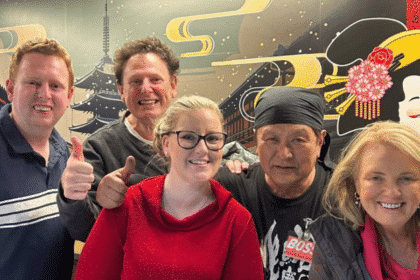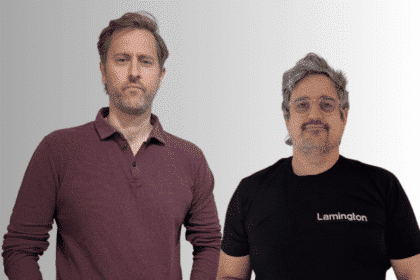The influencer market was not immune to the hardships of 2020, yet the medium may have been the quickest to adapt following the halting of production industry wide. Here, Lewis Steele, head of social and content at Connecting Plots, gives his insights on how marketers can continue to incorporate influencer marketing in our ever-changing social media landscape.
Influencer marketing has had its fair share of criticism over the years, and it wasn’t immune to the effects of the pandemic brought out many commentators who wondered whether the influencer industry would survive. Influencers, or creators as we like to refer to them, were suddenly having campaigns being postponed or dropped altogether. Luxurious sunset cocktails were swapped for the less-exotic home office (hardly inspirational or exciting content).
And, as the pandemic truly began to take hold, many industry experts suggested that advertising cuts would impact influencers more than other areas, but I would argue that they’re more resilient than the staged selfie would suggest.
Creators were in fact some of the fastest to adapt to a changed world and proved to be an effective way of creating content for brands when other types of production stalled. Some were empathetic to the new world order, jumping on and driving trends like baking sourdough and at home workouts. Others offered light hearted relief, like recognising overbearing Zoom calls or just being punny, because sometimes all we need is a distraction.
The World Health Organisation (WHO) even enlisted influencers to start spreading accurate hygiene information with a #SafeHands challenge. For brands, co-created content when done well, continued to be an efficient way of creating strong social, mobile first content.
A continually booming industry
Over the past decade or so influencers have grown consistently, with the industry reported to be worth upwards of $8 billion in 2019. It’s up there as one of the highest growth areas of many digital marketers’ arsenal. Almost three in four marketers are spending more on influencer marketing now than they were a year ago, and that influencer activity is increasingly being integrated into more traditional channels such as out of home (OOH), print and TV.
You can easily see the appeal with influencers being touted as a one-stop-shop for creative, production and media. Celebrity, once only possible for the world’s biggest brands, was suddenly accessible to all. And word of mouth, often considered as the holy grail of influence in marketing, offered on tap.
An erosion in trust
But influencer marketing is not without its issues.
Firstly, organic reach is close to dead on some channels. It is controlled entirely by the algorithms coded into each platform. Yet if a social media platform makes its money from advertisers paying to reach audiences, then it makes sense that they don’t want brands getting that reach for free.
The second issue we’re seeing is an erosion of trust in influencers in general. This isn’t surprising really given the number of high profile BS explosions that have occurred in recent years.
Completely staged photos being called out for what they are (remember the tortillas instead of pancakes for breakfast?), influencers being paid to promote universities they didn’t attend, a meticulously planned marriage proposal being sold to brands as a ‘surprise’… the list goes on.
The third is a lack of real, meaningful measurement. With 85 per cent of marketers saying engagement metrics are their biggest measure of success, but Facebook openly saying that engagement metrics don’t drive business results, something is clearly wrong.
Yet these challenges are not insurmountable. If we can just get beyond the staged selfie and start to tap into the true talent that creators all around the world offer, then it’s easy to access the real benefits of influencers.
Bringing us closer together
As Australians’ ecommerce involvement grows as we turn to online shopping in droves, it makes sense that the role influencers play for brands and businesses will grow too.
While social media generally has taken quite a hit in recent years with various scandals and reports of negative consequences on mental wellbeing and society more broadly, 2020 really started to bring us back to what social media was created to do in the first place – bring us closer together.
Social platforms have been a major tool for social connection this year and while we’ve been forced to spend more time than ever at home, it’s helped us to sustain community and friendships when we can’t be together physically.
To capitalise on this shift, social media platforms have been fast tracking the development of new products and tools, such as Facebook and Instagram Shop and Snapchat’s Places on Maps.
This is extending directly into influencer related platform capabilities such as branded content and whitelisting influencers for paid social. Shoppable Instagram Reels and TikTok’s recent Shopify integration (which enables in-feed shoppable video ads) will also likely extend to creators soon.
This of course will shorten the funnel, and increase the role that influencers can have for brands, increasingly adding direct sales into their remit. Social commerce will undoubtedly make influencers more powerful for brands, as a single influencer can take consumers from product discovery to purchase in just a few clicks.
With this growth in mind, here are five tips for partnering effectively with influencers in 2021:
- Be clear what you’re using influencers for. Choose (and measure) based on that. Is your focus on creative and content, talent, social proof or sales? It can be a mix, but be clear what the main role for your partnerships is and then use that to assess who is right for your campaign.
- Co-create FTW. Nailing creative is hard. Every single marketer knows that. It’s the same for influencers, so don’t just send an email brief or a short-blurb transactional exchange and expect amazing, effective creative. Stop, collaborate and listen. Influencers have incredible talent but to get the most out of that talent it’s important to work together closely, to really tap into their expertise. Our recent partnerships for a Menulog TikTok Hashtag Challenge involved collaboration with creators across all elements of the campaign from music through to video and the actual challenge format.
- Trial new platforms and features. Creators can offer a low-risk way to test out new platforms, features and trends. Use their expertise to create native, fit-for-channel content and easily test out a new channel or social feature via the influencer’s channel, while also incorporating their content into ad assets in line with your media plan for guaranteed scale. Connecting Plots recently partnered with social creators whose video content formed the basis of fully branded MILO Cereal social ads that ran across multiple channels.
- Think beyond your comms. Could you involve influencers earlier, for example, releasing a product with an influencer? Tap into that celeb status, existing audience and earned potential with a product made specifically for an influencer partnership. Recent campaigns such as Dunkin x Charli D’amelio or McDonalds x Travis Scott have shown the potential that such partnerships have.
- Trial affiliate agreements. With the increase in DCTC (direct-creator-to-consumer) sales, look for influencers who you can trial affiliate agreements with. If you can generate returns that benefit both parties then you have a model to scale.
Despite what people thought, the pandemic evidently did not wipe out the influencer marketing space. In fact, it only made it stronger and proved just how valuable a tool creators can be in your marketing arsenal. With more distributed shopping experiences happening online, influencers will increasingly play a role at the lower end of the funnel, and in doing so will show direct sales ROI, which will cement their use in modern marketing campaigns.








